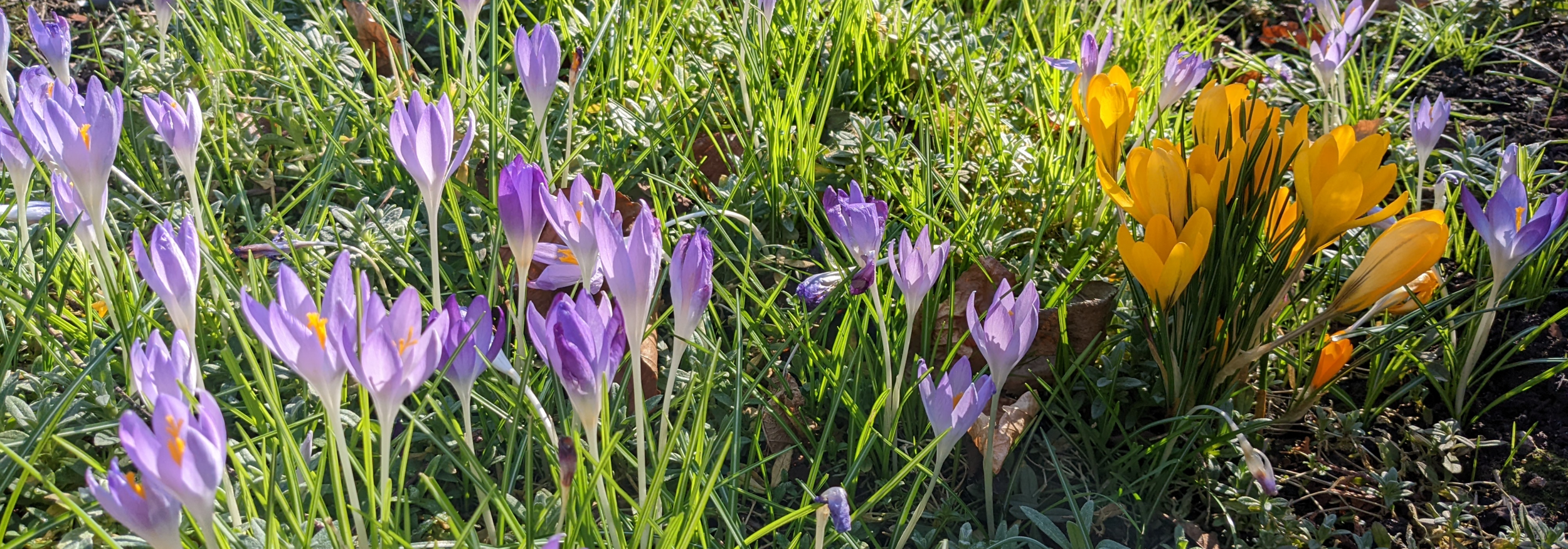When is an Amaryllis not an Amaryllis?
/When it’s a Hippeastrum of course!
This might sound like a really lame cracker joke, but it relates to a serious question, a puzzle which caused much confusion and debate amongst botanists and taxonomists for more than two centuries - more on that later.
As we move towards mid-winter, low light levels, and colder weather, some of us might feel inclined to stay inside rather than brave the elements. All is not lost on the gardening front though, house plants and winter flowering bulbs can ensure that green fingers do not lose their touch and help stave off those winter blues. The popularity of house plants apparently soared during the first lockdown and some are perfect for this time of year, flowering when many plants both outside and in aren’t offering much in the way of colour. Poinsettias are a plant we associate with Christmas, but another festive favourite can be much more easily wrapped, found in the form of piles of boxes (a better choice of colours and petal shape and larger - for more flowers - bulbs can be found when buying them loose by the way) featuring photographs of pink, red, white, cream and even green, lily like flowers. Of course, I am writing about the amaryllis, or to be accurate, cultivars of Hippeastrum spp., an easy to grow bulb which will flower 7-10 weeks after potting up.
Amaryllis Belladonna
If you haven’t heard of Hippeastrum, that is because they are still more commonly sold as amaryllis. For over 230 years, disputes arose over the naming of two groups of bulbous plants, one from South America (now Hippeastrum spp.) and one from South Africa (now Amaryllis belladonna) after both were placed in the same genus by Linnaeus. The two plants are unrelated and during the 14th International Botanical Congress in 1987, the decision was made that A. belladonna would retain the name and the genus from South America be called Hippeastrum.
Hippeastrum is a genus of around 90 species and over 600 cultivars (you might have noticed that there is a bigger choice each year) of tender bulbs. The first was discovered in Chile in 1828 by German botanist Eduard Friedrich Poeppig (1798 - 1868) and named “knights star lily” by the English botanist William Herbert (1778 - 1847) from the Greek for knight (hippeus) and star (astron).
If you are given a bulb for Christmas, they really are easy to grow. Keep it cool until ready to plant and then use John Innes No.2 or a multipurpose compost and a pot a little larger than the bulb itself. Leave at least 1/3 of the bulb above the soil and press down firmly. Place the pot in a warm, well-lit spot, watering sparingly until the leaves appear and then more often; do not let the compost dry out but avoid swamping it to avoid rotting the roots and/or bulb. Turn the pot regularly and use a stake to keep the flower stalk straight, the blooms will last longer if kept cool.
After flowering, don’t throw the bulb away. Cut off the flowering stem and continue to water and fertilise through the summer. In late summer, stop watering and when the leaves go yellow cut them off. Store the bulb (out of soil or in the pot) in a dark dry place for at least 8 weeks and 7-8 weeks before you want the bulb to flower again, repot and treat as above. I’ve just realised that mine is still sitting in the conservatory, must go and stick it in the dark!
Assorted hippeastrum
Images: A. belladonna, Plants of the World online; Assorted Hippeastrum, Fluwel.



